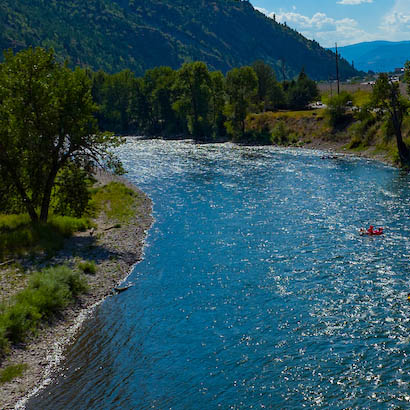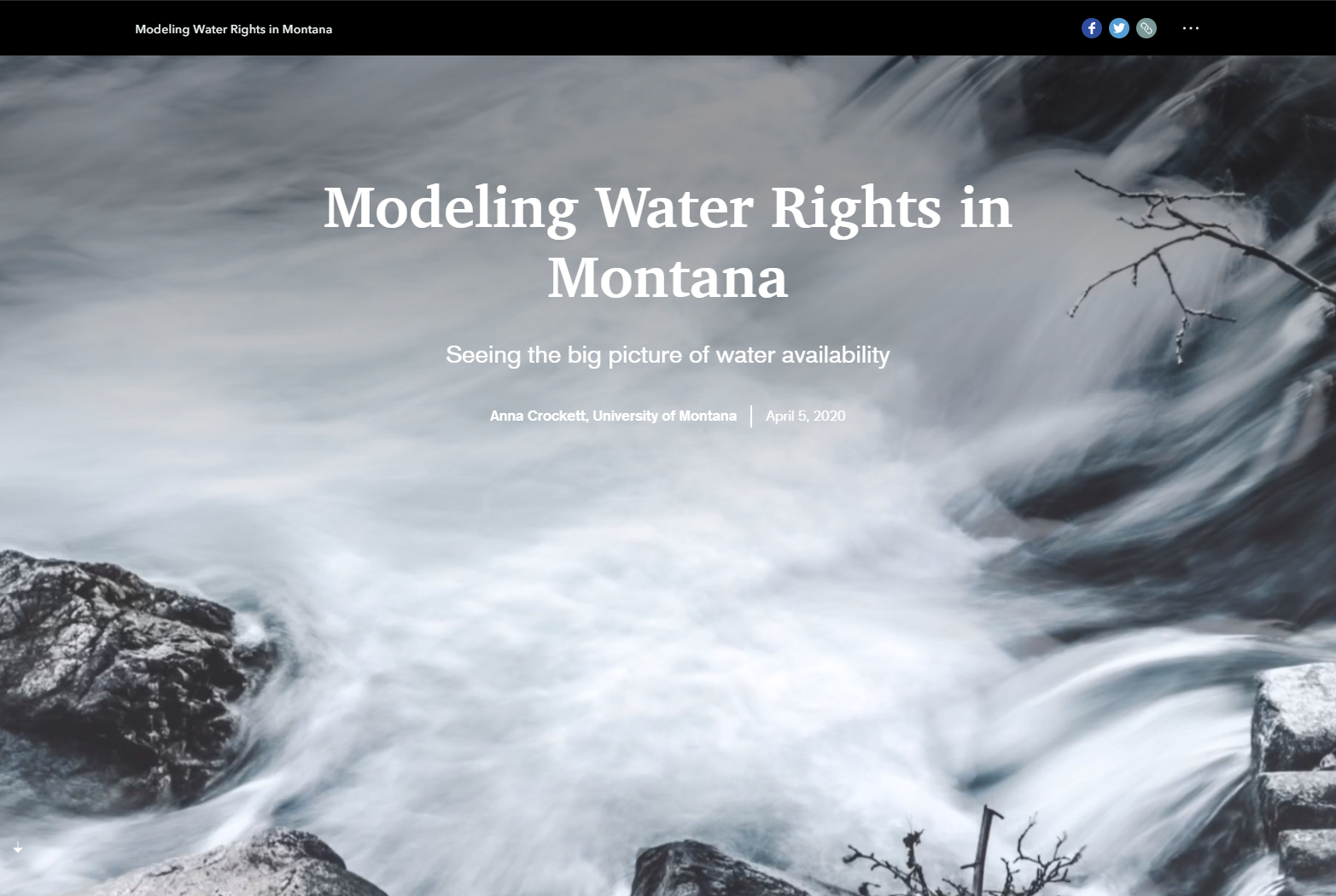The Missing Link: Modeling water rights in Montana
A visual tour
Montana manages water use and distribution in the state under the Doctrine of Prior Appropriation—a “first in time, first in right” policy where the oldest water users are guaranteed first use of available water. Prior appropriation does not always incentivize water use that reflects the most current priorities and water needs in a specific watershed. The administration of water rights in Montana under prior appropriation thus represent a critical constraint on water use as it can be difficult to develop new water rights or change the use of older ones. This coupled with future climate predictions creates uncertainty around meeting all of Montana’s future water needs, including water for a growing population, aquatic species habitat, and agriculture. Policy and law constraints should not be overlooked when it comes to hydrologic modeling, especially when attempting to understand the impacts of changing water availability. Linking hydrologic and climate predictions with the information on legal allocations of water has the potential to increase our understanding of future water needs and improve water planning at the regional and state level. To account for this legal constraint, Anna Crockett (UM graduate student) and Dr. Brian Chaffin (UM assistant professor of water policy) are working on integrating the publicly-available Montana Water Rights Database with the hydro-economic model developed by Dr. Marco Maneta and the Hydro-Economics of Agriculture research group.
To learn more about this process of integrating water rights into a hydro-economic model and its applications, Anna developed the following ArcGIS Story Map (Click on the image below). Enjoy!
Contact Anna Crockett/Brian Chaffin for more information or questions.

